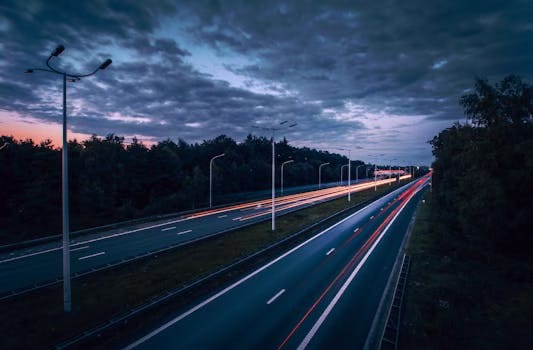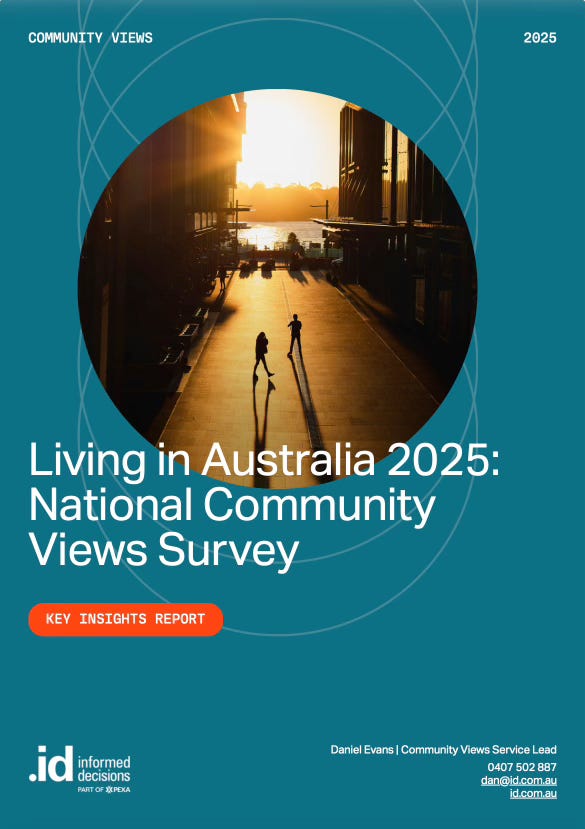Part 4: Infrastructure and Inequality – Why Regional Communities Like Ours Are Slipping Behind, and How Council’s Decisions Are Making It Worse
Living in Australia Report, 2025
The Living in Australia Report, 2025 makes one point abundantly clear: infrastructure is no longer keeping up with population growth. Across regional Australia, including the Illawarra-Shoalhaven, liveability is being eroded by the widening gap between what communities need and what governments deliver. Roads, public transport, health facilities, and housing infrastructure are stretched thin, leaving many residents worse off than their city counterparts.
In the Shoalhaven, the story is painfully familiar. Residents see roads that crumble faster than they are repaired, a health system straining under demand, and public transport options that remain threadbare.
The report notes that “inequality is increasing where infrastructure lags population growth” — and nowhere is this more evident than here. While new housing estates spring up in Callala, Worrigee, and South Nowra, the pipes, pavements, and services to support them remain inadequate.
Council’s own decisions have amplified the problem. In its first term, the SIG bloc has talked endlessly about “roads, rates, and rubbish,” yet its track record shows more posturing than delivery.
Millions have been poured into consultant-heavy reviews, restructures, and political distractions while essential infrastructure priorities have been delayed or underfunded. Council chose to sell public land in Berry while failing to deliver the promised upgrades to local facilities. Promised investments in stormwater and drainage systems at Sanctuary Point and Vincentia were shelved, leaving residents to face repeated flooding and erosion risks.
The report warns that “regional liveability depends on timely infrastructure investment, otherwise communities are locked into car dependency, long commutes, and declining social equity.” Shoalhaven Council, however, has too often doubled down on short-term populism instead of long-term strategy. For example, it has resisted higher developer contributions that could fund critical roads and sewerage, effectively subsidising developers at the expense of ratepayers. This is despite Patricia White adminting they had undercharged developers by over $50 million.
This policy choice undermines both equity and liveability: existing residents pay more while new estates lock in more demand.
Inequality grows sharper when infrastructure fails. Renters in Bomaderry and Nowra face skyrocketing rents while enduring poor transport links to jobs. Older residents in Ulladulla and Milton wait years for promised footpath connections that never arrive. And younger families struggle with limited childcare places (Patsy Clancy has done her best to make this worse, what ended up being the closer of family day care and her leading a move to prevent the building of a child care facility in Nowra), even as council spends hours in debate over symbolic motions and operational distractions.
The Shoalhaven Independent Group’s focus on secrecy and self-interest only worsens this picture. The removal of community petitions, restrictions on public speaking rights, and attempts to cut residents out of court appeal processes have left the public with fewer avenues to demand accountability.
Instead of empowering communities to help shape infrastructure priorities, SIG councillors have narrowed the conversation to their own agenda.
If Shoalhaven is to reverse this slide, it needs two things: investment and transparency. Stop funding business training and development, award night and cut back on the mayor’s travel allowances.
Investment to make sure new homes come with proper services, not just empty promises; transparency to ensure residents can see where money goes, who benefits, and why.
Without these, the report’s warning will become our reality — a region falling further behind, with infrastructure gaps that fuel inequality for decades.
Please share this with 2 friends who care about Shoalhaven.
If you get value from this post and you want to help me with information applications to get to the bottom of issues, you can donate here.
Thank you for considering this, the posts will always be free - but I could do with some help :)
Here are the current applications to council, seeking documents. At the moment I have one matter before NCAT. I will fight for transparency.
Disclaimer: This article provides analysis and commentary based on publicly available information and council transcripts. It does not make allegations of misconduct by any individual. Readers should verify details independently before drawing conclusions.
Here is a quick disclaimer, or explainer on the use of AI in the Eye.
I encourage you to take up your democratic right and engage with councillors, here are the contact details - send them questions or comments, text is best as they tend to ignore emails.



